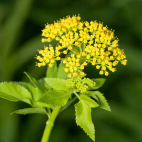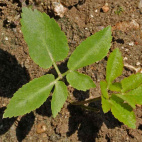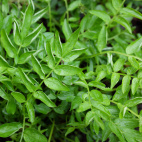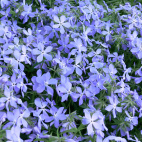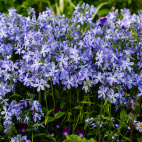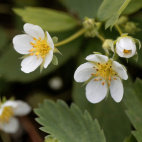Color
Availability
USDA Zone
Region
Type
Duration
Season
Germination
Soil
Sunlight
Height
Use
Narrow Your Search
Color
Availability
USDA Zone
Region
Type
Duration
Season
Germination
Soil
Sunlight
Height
Use
Wildflower Seeds - Northern Region
The Northern region is home to our Canadian friends in the eastern provinces, as well as the northern-most part of the Eastern US. This area is characterized by a long, cold winter with lots of snow, and a short humid summer that only lasts about 3 or 4 months. Most of the area is classified as a UDSA Growing Zone 4 or less, and the species that grow here have interesting ways to perpetuate themselves in spite of the short growing season. There are a lot of forests and wetlands in this region, so adequate moisture is hardly ever a problem. Look up your growing zone to make sure that the Northern wildflower seeds that you want to grow are winter hardy. Alternatively, just order annual flower seeds online so that the plant does not need to make it through the winter, but can reseed itself and come back from seed the next year.
-
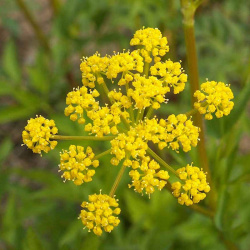 On Sale!
Golden Alexanders Seeds
Zizia aurea
These lacy yellow clusters begin to show at the beginning of spring. In the wild, these native perennials are often found growing in moist areas with dappled light. This species is often a component of native seed mixes because the early blooming flowers are a critical food source for pollinators.Quick Viewx
On Sale!
Golden Alexanders Seeds
Zizia aurea
These lacy yellow clusters begin to show at the beginning of spring. In the wild, these native perennials are often found growing in moist areas with dappled light. This species is often a component of native seed mixes because the early blooming flowers are a critical food source for pollinators.Quick ViewxGolden Alexanders Seeds
Zizia aurea
These lacy yellow clusters begin to show at the beginning of spring. In the wild, these native perennials are often found growing in moist areas with dappled light. This species is often a component of native seed mixes because the early blooming flowers are a critical food source for pollinators.
$3.48 Pkt - $9.54 / Oz -
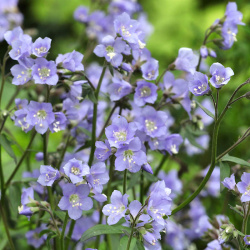 Out Of Stock
Jacob's Ladder Seeds
Polemonium reptans
Awake at the first hint of spring, these lovely native flowers provide an early pollen and nectar source for hungry pollinators. These perennials are woodland ephemerals, meaning they bloom before the leaves appear on the trees. The distinctive foliage resembles a ladder, but they do not grow very tall.Quick Viewx
Out Of Stock
Jacob's Ladder Seeds
Polemonium reptans
Awake at the first hint of spring, these lovely native flowers provide an early pollen and nectar source for hungry pollinators. These perennials are woodland ephemerals, meaning they bloom before the leaves appear on the trees. The distinctive foliage resembles a ladder, but they do not grow very tall.Quick ViewxJacob's Ladder Seeds
Polemonium reptans
Awake at the first hint of spring, these lovely native flowers provide an early pollen and nectar source for hungry pollinators. These perennials are woodland ephemerals, meaning they bloom before the leaves appear on the trees. The distinctive foliage resembles a ladder, but they do not grow very tall.
$3.75 Pkt - $120.00 / Oz -
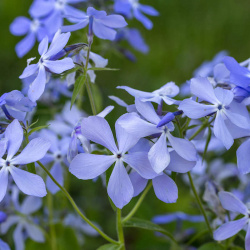 Store in the Fridge
Wild Blue Phlox Seeds
Phlox divaricata
Reminiscent of the lilac, a bouquet of these intensely fragrant blossoms will scent an entire room. Phlox Divaricata is quite rare in the wild, and it is a little challenging to grow. It is typically a woodland species, so it likes some shade in the garden.Quick View$3.96 Pkt - $320.00 / Oz
Store in the Fridge
Wild Blue Phlox Seeds
Phlox divaricata
Reminiscent of the lilac, a bouquet of these intensely fragrant blossoms will scent an entire room. Phlox Divaricata is quite rare in the wild, and it is a little challenging to grow. It is typically a woodland species, so it likes some shade in the garden.Quick View$3.96 Pkt - $320.00 / Oz -
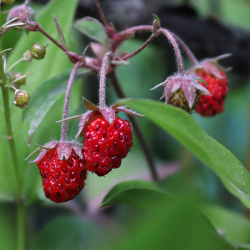 Wild Strawberry Seeds
Fragaria virginiana
Native to the United States, this plant bears tiny, wild strawberries. They are flavorful and sweet, albeit seedier than their cultivated cousins. Great for the homestead garden!Quick View$3.96 Pkt - $400.00 / Oz
Wild Strawberry Seeds
Fragaria virginiana
Native to the United States, this plant bears tiny, wild strawberries. They are flavorful and sweet, albeit seedier than their cultivated cousins. Great for the homestead garden!Quick View$3.96 Pkt - $400.00 / Oz
The Northern region is home to our Canadian friends in the eastern provinces, as well as the northern-most part of the Eastern US. This area is characterized by a long, cold winter with lots of snow, and a short humid summer that only lasts about 3 or 4 months. Most of the area is classified as a UDSA Growing Zone 4 or less, and the species that grow here have interesting ways to perpetuate themselves in spite of the short growing season. There are a lot of forests and wetlands in this region, so adequate moisture is hardly ever a problem. Look up your growing zone to make sure that the Northern wildflower seeds that you want to grow are winter hardy. Alternatively, just order annual flower seeds online so that the plant does not need to make it through the winter, but can reseed itself and come back from seed the next year.




